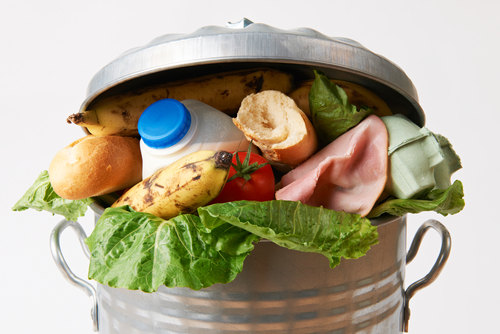
Americans waste up to 50 percent more food than U.S. consumers did in the 1970s, according to National Institutes of Health. And the government last year declared its first ever, national food waste reduction goals.
Now food waste — and trash in general — are getting to be such big problems that pockets of many U.S. cities are having a difficult time managing rubbish on trash days. The garbage, in turn, takes more money and energy to transport to landfill space that’s also limited.
This all partly explains why some U.S. cities have been trying out in-sink, electric garbage disposals as a way to reduce trash and transform food scraps into renewable sources of energy.
In the high-density Point Breeze neighborhood of south Philadelphia, for example, streets are tight. “There’s very little place to store trash,” said Carlton Williams, a Philadelphia city official, reports CNBC. He made the comments in a video for the city.
After a two-year-plus pilot program between Philadelphia and InSinkErator, a business unit of Emerson, the city now requires in-sink food waste disposers in new residential construction. The regulation went into effect earlier this year. It was signed into law in late 2015.
“It’s counterintuitive that using a disposer somehow is good for the environment,” Michael Keleman, an environmental engineer for Emerson, tells CNBC. And yes, using garbage disposers require water and electricity.
At the time of Philadelphia’s pilot program launch with Emerson, then Philadelphia Mayor Michael Nutter said he never thought he’d be holding a news conference on garbage disposers.
But food waste and the environment are changing, as waste volumes only rise.
“Diversion of organics from landfills can reduce greenhouse gas emissions,” said Keleman.
The idea behind the Philadelphia initiative is to divert as much organic food waste into reusable energy.
In-sink disposers convert food scraps into fine particles. The slurry passes through plumbing and a process called anaerobic digestion that transforms the waste. One of the end products is biogas, which can be used to generate electricity and heat.
Nearly every consumer has a tale of a clogged disposer or plumbing gone bad. But Keleman of Emerson argues proper use can prevent a lot of problems. And diverting food waste means less trash.
Participants during Philadelphia’s pilot phase said while using the garbage disposer, they put out roughly one less trash bag per week. And less food waste also means fewer rodents and critters.
With widespread use of food disposers, the city could potentially reduce food waste by around 19,000 tons annually, and save about $1.1 million in waste disposal and other costs.
U.S. food loss and waste accounts for about 31 percent of the overall food supply available to retailers and consumers, with far-reaching effects on food security and climate change, according to the USDA.
That’s why scientists and researchers are seeking waste reduction, including technology-based solutions to transform food and agricultural waste into converted energy. The goal is feeding people, not landfills.
If you have a garbage disposal, try to use it more often. And remember, for all of your trash-disposal needs in your office, stadium, or school, Securr Trash Cans has the best selection around.